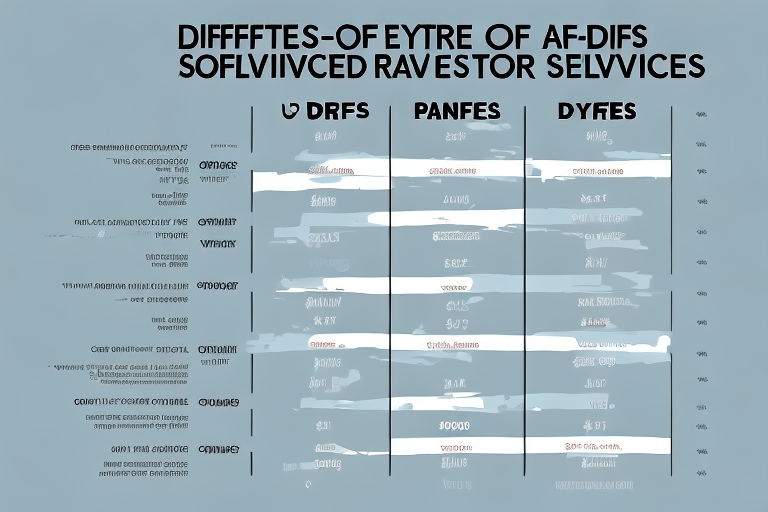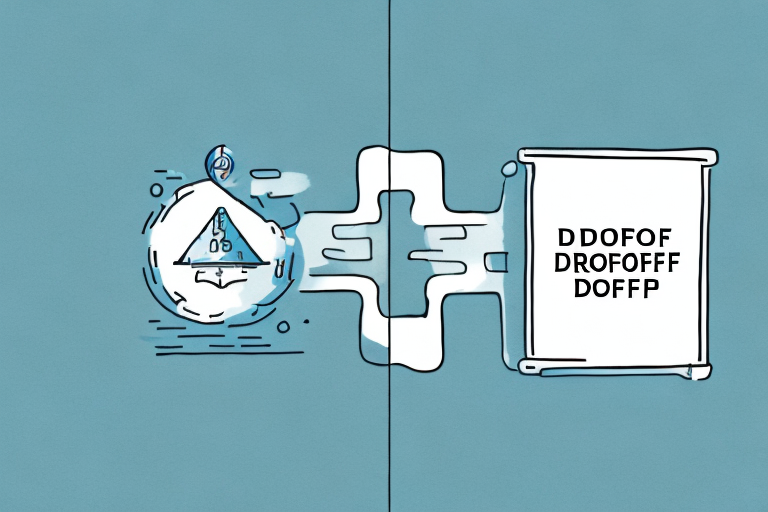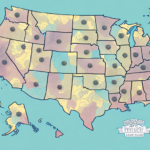Understanding UPS Shipping Rates Chart for Drop-Off Services
If you are looking to send a package or shipment with UPS, it is crucial to understand the various shipping options and their associated costs. The UPS shipping rates chart is an essential tool for calculating shipping expenses and can be accessed online or at any UPS location. In this article, we will explore in detail how to use the UPS shipping rates chart, the benefits of using drop-off services for shipping, and strategies to save money on UPS shipping costs. Let’s dive in!
What is a UPS Shipping Rates Chart?
The UPS Shipping Rates Chart is a comprehensive tool that displays the different shipping options available for a given package or shipment, along with the associated costs. It considers factors such as the package's weight, dimensions, and destination to provide an accurate estimate of shipping expenses.
Using the UPS Shipping Rates Chart helps you make informed decisions about which shipping option to choose based on your budget and delivery timeline. The chart also includes information about any additional fees or surcharges that may apply, such as fuel surcharges or residential delivery fees. By utilizing the UPS Shipping Rates Chart, you can ensure that you are getting the best value for your shipping needs.
According to UPS’s 2023 annual report, efficient shipping rate management can reduce business costs by up to 15%, highlighting the importance of understanding and effectively utilizing shipping rate charts.
How to Use the UPS Shipping Rates Chart
Using the UPS shipping rates chart is straightforward and can be done in a few simple steps:
- Determine Package Weight and Dimensions: Measure the weight and dimensions of your package accurately.
- Enter Destination Information: Input the destination address into the chart.
- Select Shipping Method: Choose your preferred shipping method, such as UPS Ground, 2nd Day Air, or Next Day Air.
- Review Shipping Rates: The chart will display the shipping rates for the selected delivery options based on your inputs.
It is important to note that the shipping rates displayed on the chart are estimates and may vary based on factors such as the type of item being shipped and the delivery location. However, the UPS shipping rates chart provides a reliable estimate of the costs associated with your particular shipment.
During peak shipping seasons, such as the holiday season, rates may be higher due to increased demand. It's advisable to check the chart regularly to ensure you are getting the best possible rate for your shipment.
If you are a frequent shipper, you may be eligible for discounts or special rates through UPS. Checking with UPS about these programs can lead to significant savings over time.
What are Drop-Off Services?
Drop-off services are a convenient and time-saving option for shipping packages with UPS. With this service, you can drop off your package at any UPS location, and it will be processed and shipped from there. This eliminates the need to wait for a pick-up and allows you to drop off your package at your convenience.
Additionally, drop-off services offer various options for package tracking and delivery notifications. You can choose to receive updates via email or text message and can even request signature confirmation upon delivery. This added level of convenience and security ensures that your package arrives safely and on time.
Benefits of Using Drop-Off Services for Shipping
Using drop-off services for shipping packages with UPS offers several benefits:
- Convenience: Easily drop off your package at any UPS location without scheduling a pick-up.
- Cost Savings: UPS often offers discounted rates for packages shipped via drop-off services compared to pick-up services.
- Enhanced Security: Packages are processed and shipped from secure UPS locations, reducing the risk of loss or damage.
- Easy Tracking: Receive a tracking number upon drop-off to monitor the progress of your shipment in real-time.
- Access to Packaging Supplies: Purchase boxes, tape, and other packing materials at UPS locations, saving time and money.
According to industry studies, businesses that utilize drop-off services can decrease shipping-related operational costs by an average of 10% annually.
Understanding the Different UPS Shipping Options
UPS offers a variety of shipping options to cater to different needs and budgets. The most popular shipping options include UPS Ground, 2nd Day Air, and Next Day Air. The choice of shipping option depends on factors such as package weight and dimensions, destination, and delivery urgency.
UPS Ground: The most cost-effective option for packages that are not time-sensitive. Delivery typically takes up to 5 business days, making it ideal for businesses aiming to save on shipping costs without requiring immediate delivery.
2nd Day Air: A faster shipping option that guarantees delivery within 2 business days. This is suitable for time-sensitive packages and offers a balance between speed and cost.
Next Day Air: The fastest shipping option, ensuring delivery on the next business day. This option is ideal for urgent shipments but comes at a higher cost.
Choosing the right shipping option can significantly impact your business's customer satisfaction and operational efficiency. According to UPS's 2023 performance metrics, businesses utilizing expedited shipping options saw a 20% improvement in customer satisfaction scores.
How to Calculate Shipping Costs Using the UPS Shipping Rates Chart
To calculate shipping costs using the UPS shipping rates chart, follow these steps:
- Enter Package Details: Input the weight, dimensions, and destination of your package into the chart.
- Select Shipping Option: Choose your preferred shipping method from the available options.
- Review Estimated Costs: The chart will display the estimated shipping costs based on your inputs.
- Consider Additional Fees: Be aware of any additional fees such as fuel surcharges or residential delivery fees that may apply.
For accurate cost estimation, ensure that the package details are measured precisely. Additionally, consider the type of item being shipped and the delivery location, as these factors can influence the final shipping cost.
It's crucial to review the carrier's terms and conditions to understand any potential additional charges that may be added to your shipping costs.
Tips for Saving Money on UPS Shipping Costs
There are several strategies to save money on UPS shipping costs:
- Utilize Drop-Off Services: Shipping via drop-off services is often cheaper than using pick-up services.
- Choose Lower Shipping Options: Opt for more cost-effective shipping options like UPS Ground instead of expedited services like 2nd Day Air or Next Day Air.
- Efficient Packaging: Pack items efficiently to reduce the weight and dimensions of the package, thereby lowering shipping costs.
- Take Advantage of Discounts: UPS offers discounts for businesses and frequent shippers, as well as seasonal promotions and special deals.
By implementing these tips, businesses can effectively reduce their shipping expenses. According to UPS's 2023 shipping cost analysis report, businesses that adopt these strategies can achieve savings of up to 12% on their annual shipping costs.
Understanding Additional Fees and Surcharges on UPS Shipments
UPS may impose additional fees and surcharges on certain shipments based on factors such as the type of item being shipped and the delivery location. Common additional charges include:
- Fuel Surcharges: Fees applied to cover fluctuating fuel costs.
- Residential Delivery Fees: Extra charges for delivering to residential addresses.
- Delivery Area Surcharges: Additional fees for deliveries to certain geographic areas.
- Special Handling Fees: Charges for shipping items that require special handling, such as hazardous materials or oversized packages.
- Signature Confirmation Fees: Additional charges for requiring a signature upon delivery.
Understanding these additional fees is crucial for accurate cost estimation. It's recommended to review the UPS website or contact a UPS representative to fully comprehend all potential fees and surcharges that may apply to your shipment.
Common Mistakes to Avoid When Using the UPS Shipping Rates Chart
When using the UPS shipping rates chart, avoid these common mistakes to ensure accurate shipping cost estimates:
- Inaccurate Measurements: Not accurately measuring the weight and dimensions of the package can lead to incorrect shipping estimates.
- Ignoring Additional Fees: Failing to consider additional fees and surcharges can result in unexpected higher costs.
- Selecting Incorrect Shipping Options: Choosing a shipping option that does not align with delivery requirements can lead to delays or unnecessary expenses.
- Not Utilizing Discounts: Missing out on available discounts and promotions can prevent you from saving money on shipping costs.
By being aware of and avoiding these mistakes, you can ensure more accurate cost estimations and optimize your shipping process.
Comparing UPS Shipping Rates with Other Carriers
When sending a package or shipment, it is important to compare the shipping rates of different carriers to find the best deal. While UPS is one of the most popular shipping carriers, there are other options such as FedEx and USPS. By comparing the rates and services of different carriers, you can identify the most cost-effective shipping solution for your needs.
According to the 2023 Carrier Performance Survey by the Shipping Logistics Institute, businesses that regularly compare shipping rates save an average of 8% on their annual shipping costs.
How to Track Your Shipment Using the UPS Tracking Tool
Once your package has been shipped, you can track its progress using the UPS tracking tool. This tool allows you to monitor your package in real-time and provides updates on its current location and estimated delivery date.
To track your shipment, follow these steps:
- Visit the UPS Tracking Tool on the UPS website.
- Enter the tracking number provided by UPS in the designated field.
- Click the "Track" button to view the status and location of your package.
UPS's tracking system is known for its reliability, providing timely updates to ensure that both senders and recipients are informed throughout the shipping process.
Understanding Delivery Times and Transit Days for UPS Shipments
UPS provides estimated delivery times and transit days for its various shipping options. These estimates are based on factors such as the destination, the selected shipping option, and the time of day the package was shipped.
Here's a general overview:
- UPS Ground: Typically delivers within 1-5 business days, depending on the distance between the origin and destination.
- 2nd Day Air: Guarantees delivery within 2 business days.
- Next Day Air: Ensures next-business-day delivery.
Considering these estimates when selecting a shipping option helps ensure that your package arrives on time, meeting your delivery requirements and customer expectations.
How to Choose the Right Packaging for Your Shipment
Choosing the right packaging is essential to ensure that your shipment arrives safely and intact. UPS offers a variety of packaging options, including boxes, envelopes, and tubes.
When selecting packaging, consider the following:
- Size and Weight: Ensure the packaging is appropriate for the size and weight of the contents to avoid unnecessary shipping costs.
- Item Fragility: Use additional padding or protective materials for fragile or delicate items to prevent damage during transit.
- Compliance: Ensure that the packaging meets UPS's packaging guidelines for the specific shipping option selected.
Proper packaging not only protects your items but also contributes to more accurate shipping cost estimates by minimizing weight and dimensions. UPS provides free standard shipping supplies, which can be a cost-effective option for businesses.
We hope that this article has provided you with a comprehensive understanding of the UPS shipping rates chart and drop-off services. By following the tips and information provided, you can make informed decisions when shipping your packages with UPS and save money in the process.






















